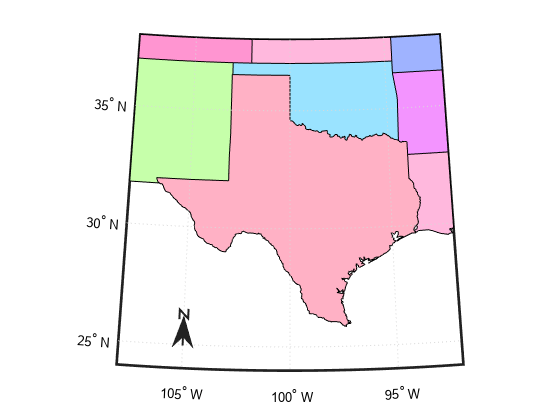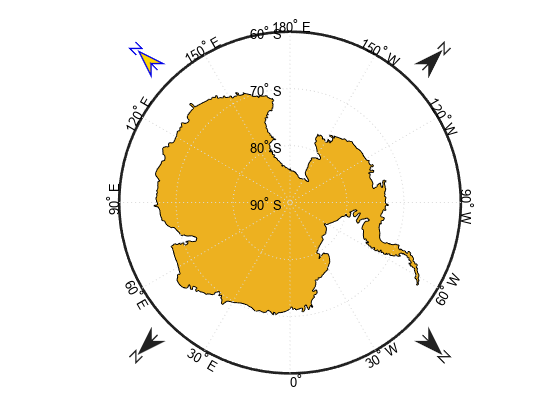northarrow
Add north arrow to axesm-based map
Syntax
northarrow
northarrow('property',value,...)
Description
northarrow creates a default
north arrow.
northarrow('property',value,...) creates a north arrow
using the specified property/value pairs. Valid entries for properties are
'latitude', 'longitude',
'facecolor', 'edgecolor',
'linewidth', and 'scaleratio'. The
'latitude' and 'longitude' properties
specify the location of the north arrow. The 'facecolor',
'edgecolor', and 'linewidth' properties
control the appearance of the north arrow. The 'scaleratio' property
represents the size of the north arrow as a fraction of the size of the axes. A
'scaleratio' value of 0.10 creates a north arrow one-tenth (1/10)
the size of the axes. You can change the appearance ('facecolor',
'edgecolor', and 'linewidth') of the north
arrow using the set command.
The northarrow function creates a north arrow symbol at the map origin on
the displayed map. You can reposition the north arrow symbol by clicking and dragging
its icon. Alternatively, open a dialog box that you can use to change the location of
the north arrow by right-clicking or Ctrl-clicking the arrow. The
orientation of the north arrow is computed for you, and does not need manual adjustment,
no matter where you move the symbol.
Modifying some of the properties of the north arrow results
in replacement of the original object. Use HANDLEM('NorthArrow') to
get the handles associated with the north arrow.
Examples
Limitations
You can draw multiple north arrows on the map. However, the callbacks will only work with the most recently created north arrow. In addition, since it can be displayed outside the map frame limits, the north arrow is not converted into a “mapped” object. Hence, the location and orientation of the north arrow have to be updated manually if the map origin or projection changes.
Version History
Introduced before R2006a




